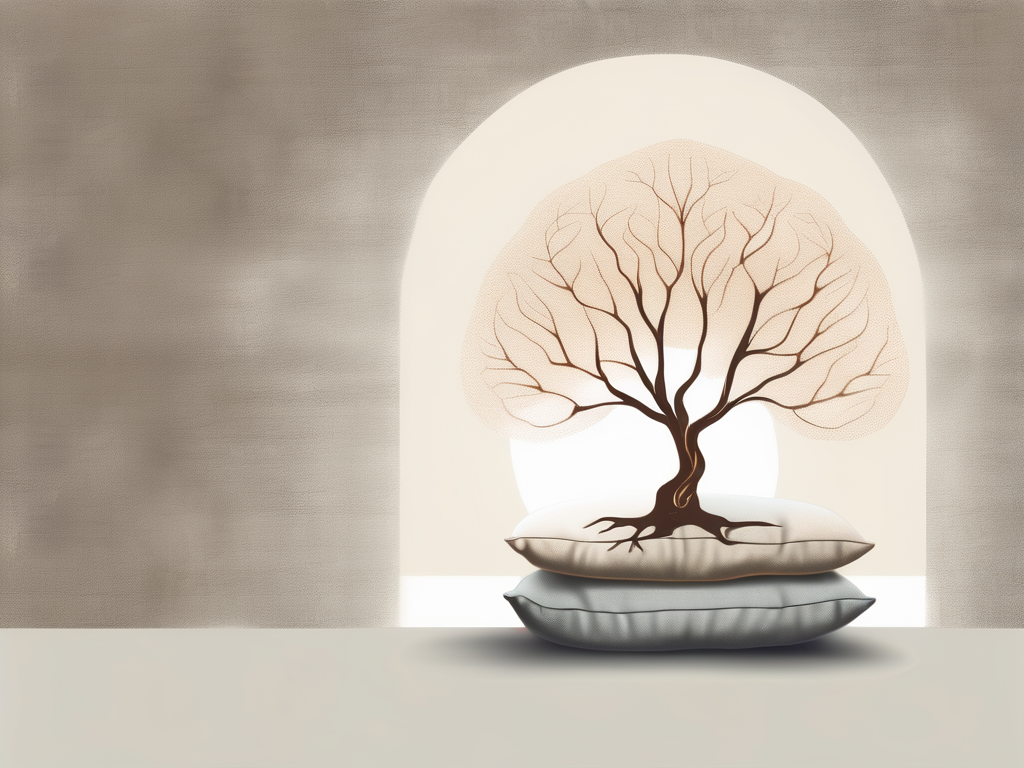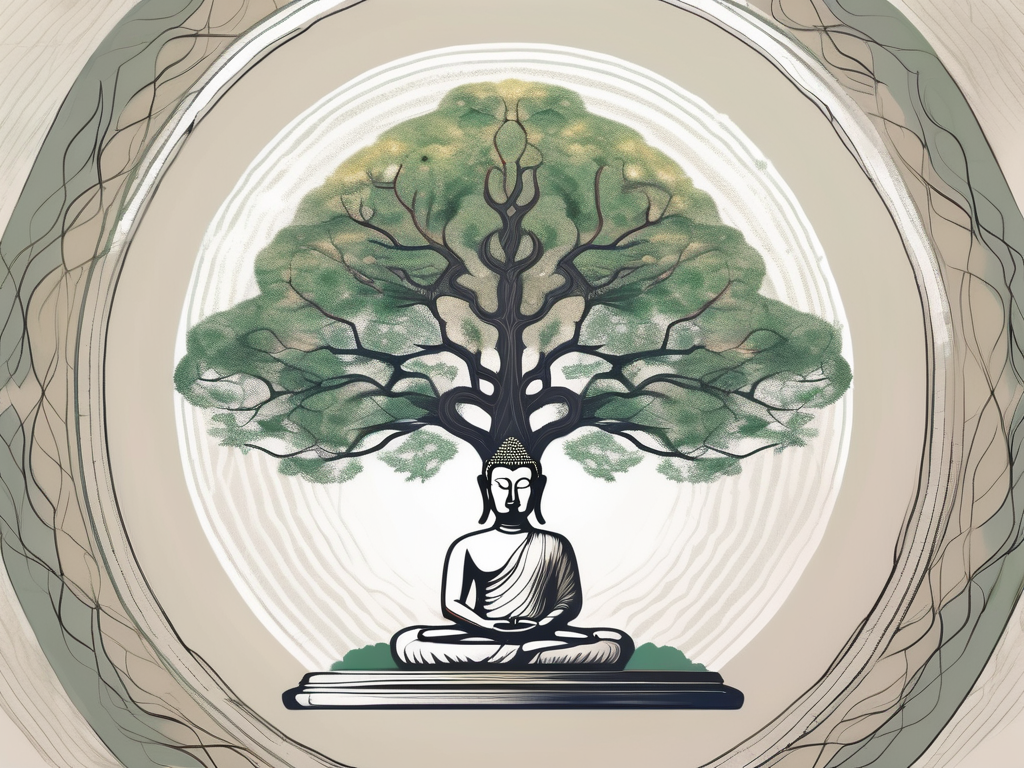If you’re curious about the history of Buddhism, you’re in for a treat! This ancient religion has a rich and fascinating past that spans centuries and continents. From its humble beginnings in India to its spread across East Asia, Buddhism has left an indelible mark on the world. So, sit back, relax, and let’s dive into ten captivating facts about the history of Buddhism.
The Origins of Buddhism
Let’s start at the very beginning. Buddhism traces its roots back to the sixth century BCE, in present-day Nepal. It all began with a man named Siddhartha Gautama, who would later become known as the Buddha. Born into a royal family, Siddhartha grew up sheltered from the harsh realities of life.
But one fateful day, Siddhartha decided to venture beyond the palace walls. What he witnessed – old age, sickness, and death – deeply moved him. Determined to find the true meaning of life, he renounced his royal privileges and embarked on a spiritual journey.
During his journey, Siddhartha encountered various spiritual teachers and practiced different forms of meditation. He sought answers to questions that had plagued him for years: Why do we suffer? What is the nature of reality? How can we find lasting happiness?
After years of wandering and seeking wisdom, Siddhartha finally attained enlightenment underneath a Bodhi tree. It is said that he spent a whole night in deep meditation, battling with his inner demons and temptations. At dawn, as the first rays of sunlight touched his face, he experienced a profound realization. From that moment on, he became known as the Buddha, which means “the awakened one.”
The Buddha’s enlightenment was not just a personal experience; it was a profound insight into the nature of existence. He discovered the Four Noble Truths – the truth of suffering, the truth of the cause of suffering, the truth of the end of suffering, and the truth of the path that leads to the end of suffering. These truths formed the foundation of his teachings, known as the Dharma.
The Birth and Enlightenment of Buddha
After attaining enlightenment, the Buddha spent the next several weeks contemplating the implications of his realization. He debated with other spiritual teachers, shared his insights with fellow seekers, and began to attract disciples who were eager to learn from him.
During this time, the Buddha delivered his first sermon, known as the Dhammacakkappavattana Sutta, or “Setting in Motion the Wheel of Dharma.” In this sermon, he outlined the Four Noble Truths and the Eightfold Path, which is the practical guide to achieving enlightenment.
News of the Buddha’s teachings spread rapidly, and people from all walks of life flocked to hear him speak. His message of peace, compassion, and enlightenment resonated deeply with those who were weary of the suffering and dissatisfaction that plagued their lives.
The Spread of Buddhism in India
As the Buddha shared his wisdom with others, Buddhism gained a following in India. Monasteries were established, providing a place for monks and nuns to live a life dedicated to spiritual practice. These monastic communities became centers of learning and meditation, attracting scholars and seekers from far and wide.
The teachings of the Buddha began to flourish, and various schools of Buddhism emerged, each with its own interpretation of the Dharma. These schools engaged in lively debates and discussions, further enriching the understanding of Buddhist philosophy and practice.
Buddhism also found support from kings and rulers who recognized the value of the Buddha’s teachings. They built grand stupas and monastic complexes, patronizing the growth of Buddhism and ensuring its preservation for future generations.
Over time, Buddhism spread beyond the borders of India, reaching countries like Sri Lanka, Myanmar, Thailand, and Cambodia. It continued to evolve and adapt to different cultures, giving rise to diverse traditions and practices.
Today, Buddhism is a global religion, with millions of followers around the world. Its teachings continue to inspire and guide individuals on their own spiritual journeys, offering a path to inner peace, wisdom, and liberation.
The Teachings of Buddhism
At the core of Buddhism are the Four Noble Truths. These profound insights into the nature of suffering and its cessation are the bedrock of Buddhist philosophy. The Buddha taught that suffering is an inherent part of life, but that it can be overcome through the cessation of desire.
Buddhism, originating in ancient India, has spread across the world, touching the lives of millions. Its teachings offer a path to inner peace and enlightenment, providing solace to those seeking answers to life’s fundamental questions.
The Four Noble Truths
The first noble truth is the truth of suffering. It encompasses the physical and mental pain experienced by all beings. From the moment of birth, we encounter various forms of suffering, be it illness, loss, or the existential angst that arises from the impermanence of life.
The second noble truth teaches us that suffering is caused by craving and attachment. Our insatiable desires and the attachments we form to people, possessions, and ideas bind us to a perpetual cycle of dissatisfaction. Buddhism encourages us to recognize and transcend these attachments, freeing ourselves from their grip.
The third noble truth offers hope – it tells us that there is an end to suffering. Through the cessation of craving and attachment, we can attain a state of liberation known as Nirvana. This ultimate goal of Buddhism represents the complete cessation of suffering and the attainment of true peace.
And finally, the fourth noble truth reveals the path to liberation – the Eightfold Path. This path serves as a guide for individuals seeking to overcome suffering and attain enlightenment.
The Eightfold Path
The Eightfold Path consists of eight interconnected steps that practitioners can follow to achieve enlightenment. Each step encompasses a specific aspect of ethical conduct, mental discipline, and wisdom.
The first step is right understanding, which involves comprehending the Four Noble Truths and the nature of reality. It requires us to see the impermanence and interconnectedness of all things, cultivating a deep understanding of the world around us.
Right thought follows, emphasizing the importance of cultivating positive and compassionate thoughts. By nurturing thoughts of kindness, generosity, and non-harm, we create a foundation for virtuous actions.
Right speech encourages practitioners to use words that are truthful, kind, and beneficial. It emphasizes the power of communication and the impact our words can have on others, urging us to speak with mindfulness and empathy.
Right action extends beyond speech to encompass our physical conduct. It encourages ethical behavior, promoting actions that are non-violent, honest, and respectful towards all living beings.
Right livelihood emphasizes the importance of engaging in work that is ethical and aligned with the principles of Buddhism. It encourages individuals to choose occupations that do not cause harm or contribute to the suffering of others.
Right effort involves cultivating a diligent and persistent attitude towards spiritual practice. It encourages practitioners to make a sustained effort in developing positive qualities and letting go of negative habits.
Right mindfulness is the practice of being fully present in the moment, observing our thoughts, feelings, and sensations without judgment. It cultivates a deep awareness of our inner and outer experiences, allowing us to develop insight and wisdom.
Lastly, right concentration involves training the mind to achieve a state of deep focus and tranquility. Through meditation and other contemplative practices, we can attain a state of one-pointed concentration, leading to clarity and insight.
By following the Eightfold Path, individuals can gradually transform their lives, cultivating wisdom, compassion, and inner peace. It is a lifelong journey that requires dedication and self-reflection, but one that holds the promise of liberation from suffering and the attainment of enlightenment.
Buddhism’s Journey to East Asia
As Buddhism gained momentum in India, it started to spread beyond its borders, reaching East Asia in the process. The journey of Buddhism to East Asia was not just a physical migration, but also a cultural and philosophical transformation. East Asian countries such as China, Japan, and Korea embraced Buddhism and adapted it to their own cultural contexts, creating unique and diverse expressions of this ancient religion.
When Buddhism arrived in China, it encountered Taoism and Confucianism, two prominent philosophical systems deeply rooted in Chinese culture. These three philosophical traditions began to intertwine, giving birth to a unique blend known as Chinese Buddhism. Chinese Buddhist temples, with their ornate architecture and serene gardens, became not only places of worship but also spaces of tranquility and contemplation. The fusion of Buddhism with Chinese culture resulted in the development of various Buddhist schools, such as Pure Land Buddhism and Chan Buddhism, each with its own distinctive practices and teachings.
Buddhism’s influence in China extended beyond religious practices. It permeated various aspects of Chinese society, including art, literature, and philosophy. Buddhist art flourished during this period, with intricate sculptures and vibrant paintings depicting Buddhist deities and stories. Buddhist scriptures were translated into Chinese, making them accessible to a wider audience and contributing to the spread of Buddhist teachings.
In Japan, Buddhism also found a welcoming reception and became an integral part of Japanese society. The Japanese people embraced Buddhism and integrated it into their daily lives, influencing art, architecture, and even tea ceremonies. Zen Buddhism, in particular, found a home in Japan, emphasizing meditation and direct experience as paths to enlightenment. Zen gardens, with their meticulously arranged rocks and raked gravel, became spaces for contemplation and reflection.
The influence of Buddhism on Japanese culture extended beyond religious practices. It shaped the way the Japanese people viewed nature, beauty, and the impermanence of life. Buddhist concepts such as mindfulness and compassion became deeply ingrained in Japanese society, influencing not only individuals but also the collective consciousness of the nation.
As Buddhism continued to spread and evolve in East Asia, it encountered various indigenous beliefs and cultural practices. These encounters gave rise to new forms of Buddhism, each reflecting the unique cultural and philosophical landscape of the region. Buddhism’s journey to East Asia was not just a one-way transmission, but a dynamic process of mutual exchange and adaptation.
The Different Sects of Buddhism
Over time, Buddhism evolved and branched out into different sects, each with its own unique practices and beliefs. Two prominent sects are Theravada Buddhism and Mahayana Buddhism.
Theravada Buddhism, also known as the “Way of the Elders,” is one of the oldest surviving sects. It is predominantly practiced in Southeast Asia, Sri Lanka, and parts of India. Theravada Buddhists seek to attain enlightenment through personal practice and individual effort.
Theravada Buddhism places great importance on the teachings of the Pali Canon, which is considered the most authentic and original collection of the Buddha’s teachings. This sect believes that the path to enlightenment lies in following the Noble Eightfold Path, which consists of right view, right intention, right speech, right action, right livelihood, right effort, right mindfulness, and right concentration.
In Theravada Buddhism, the ultimate goal is to achieve nirvana, a state of complete liberation from suffering and the cycle of rebirth. This is accomplished through the practice of meditation, mindfulness, and ethical conduct. Monasticism is highly valued in Theravada Buddhism, with monks and nuns dedicating their lives to the pursuit of enlightenment and the teaching of the Dharma.
Mahayana Buddhism, on the other hand, is characterized by its emphasis on compassion and the belief in the existence of bodhisattvas – enlightened beings who postpone their own liberation to help others. This sect is prevalent in East Asian countries like China, Japan, and Korea.
Mahayana Buddhism teaches that all beings have the potential to become enlightened and attain Buddhahood. It emphasizes the concept of “emptiness,” which refers to the idea that all phenomena lack inherent existence. This understanding of emptiness allows Mahayana practitioners to cultivate compassion and engage in altruistic actions to benefit all sentient beings.
One of the key Mahayana texts is the Lotus Sutra, which teaches the doctrine of skillful means – the idea that the Buddha uses various methods to guide beings towards enlightenment according to their individual capacities and needs. This sect also places great importance on the worship and veneration of bodhisattvas, who are seen as compassionate beings that can intercede on behalf of practitioners.
In addition to Theravada and Mahayana, there are other sects of Buddhism such as Vajrayana Buddhism, which is practiced mainly in Tibet and Nepal. Vajrayana Buddhism incorporates esoteric practices and rituals, and it is known for its emphasis on the use of mantras, mudras, and visualizations as means of attaining enlightenment.
Each sect of Buddhism offers its own unique perspective and practices, providing individuals with different paths to spiritual development and liberation. The diversity within Buddhism reflects the richness of the teachings of the Buddha and the various ways in which they can be interpreted and applied.
Buddhism in the Modern World
Fast forward to the present day, and Buddhism continues to be a vibrant and influential force in the world. Its teachings have found their way into the Western consciousness, shaping the way we think about mindfulness, meditation, and compassion.
The Influence of Buddhism on Western Culture
Countless individuals in the West have turned to Buddhism to find solace, peace, and meaning in their lives. Mindfulness practices, derived from Buddhist meditation techniques, have become popular tools for stress reduction and self-exploration.
The Role of Buddhism in Contemporary Society
Buddhism, with its emphasis on compassion and social justice, has also played a crucial role in addressing modern-day issues. Buddhist activists across the globe work tirelessly to promote environmental sustainability, human rights, and equality.
So, there you have it – ten fascinating facts about the history of Buddhism. From its origins in ancient India to its far-reaching impact in the modern world, Buddhism has continued to evolve and inspire countless individuals on their spiritual paths. Whether you’re a seasoned practitioner or simply curious about the teachings of the Buddha, there is much to discover and learn from this profound and enlightening tradition.












